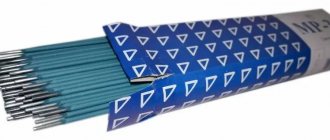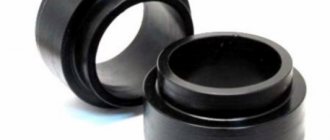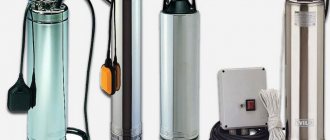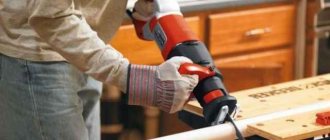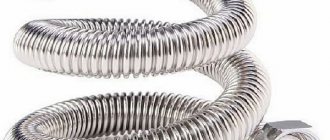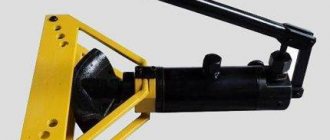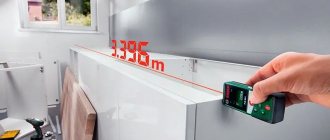The specialized tool market today offers both cast iron bench vices and those made of steel using various technologies. When choosing equipment for your workshop, you should take into account the properties of these materials.
Among the undoubted advantages of cast iron, one should note its hardness and resistance to destruction. A vice made of this metal, even without a special anti-corrosion coating, does not rust and can last almost forever. In addition, a massive cast iron tool absorbs the impact when working with a mallet or hammer - and as a result, more precise processing of the product is possible.
Cast iron bench vices are used when performing labor-intensive work with heavy loads. For more delicate operations, steel tools are used. Thus, products made from forged parts that have undergone special hardening have the best performance characteristics. Steel is also used in the production of tabletop portable vices. The price of such a tool is higher than that of cast iron, but it often has design advantages: a patented jaw adjustment system, a modern rotary mechanism, and so on.
A bench vice is a tool that is used to secure parts and workpieces during assembly and plumbing work.
This type of equipment is an integral attribute of workshops where repair services are offered. In addition, these devices are also suitable for use in domestic conditions - they can often be found in an ordinary garage. Bench vices are also widely used in various enterprises - in such cases, preference is given to professional devices.
Purpose of a bench vise
Bench vices perform the function of fixing parts of different shapes and sizes, without which further processing of the product is practically impossible. Using this device allows you to perform high-quality work with both hands, which is very convenient and practical. In this case, the workpiece being processed does not need to be held in a certain position, which means that the master can fully concentrate on performing a specific task. Mechanical vices are mainly used for cutting, drilling, planing, grinding, assembling and disassembling various mechanisms and components.
It is worth choosing a specific model after first deciding on the type of work that is planned to be carried out and the size of the parts being processed. To solve the above problems, benchtop bench vices are most often used, the design of which involves working without additional mechanisms, while the master’s hands remain free.
Smart decision when choosing a vice
It is known that you should not focus only on strength and materials when choosing. For the best option, you will have to pay attention to all the little things and details. It is important to know the main guidelines for the right purchase.
Despite a major leap in industry development, most vises are still similar to those created from previous decades. The main working field is special jaws, a running mechanism and a support plate. One of the jaws is firmly attached to the base, and the second is a direction-changing mechanism that is controlled using a revolving handle.
What types of vices are there?
The basis for creating a vice is a strong metal base. In most versions, the vice is made of steel or cast iron. Wooden vices are also present in industry, but their use is limited in accordance with the specifics of the work, due to the insufficient strength of the jaws.
The variety of types of vices is due to different specifications of work. From this they can be divided into:
- Metalworking (based on holding solid parts without destroying their integrity);
- Carpentry (focused on working with wooden parts and able to maintain their integrity under strong pressure);
- Machines that are installed on a statin (their peculiarity is that only one area of the clamped material is processed, that is, there is a limitation in the choice of the impact zone);
- Machines for working with pipes (they fit the material being processed on several sides);
It is precisely such little things that sometimes workers and craftsmen turn a blind eye to, and then experience minor difficulties in their work.
The method of fixing the vice on the base makes it possible to approximately formulate the leading operating criteria. Simply put, if the vice is mounted motionless on the base, then the main attention is paid to the methods of fixation, and vice versa. The size of the vise is not always the determining criterion, since strength, strength and comfort will not necessarily be great with a device with a large vise.
It is worth paying attention to additional devices and accessories that simplify your work. This item includes specific options for installing a vice with a rotation of 180 or 360 degrees, additional leg ledges, an increased processing area, and so on. This allows for better processing of parts, increasing the working area, improving the turning mechanism of the handle, and so on.
Cast iron or steel?
Steel vices have specific advantages. First of all, they are light and compact, which is why no unnecessary problems will arise during constant transportation. They are more suitable for working in certain areas. They make it easier to process some small parts. Despite these advantages, they quickly become rusty and require more care in high humidity. Due to the ability to work with fragile parts, their price is much higher than other options.
The cast iron version of the vice has always stood out for its incredible strength and hardness. They are able to withstand strong vibrations and shocks without breaking. That is, during long-term operation there is no risk of microcracks appearing on the device. This type of vise performs well on large and bulky parts where work occurs over an entire area. Due to the peculiarity of the cast iron alloy, they are not subject to corrosion. However, with all the advantages, there are also disadvantages, such as huge dimensions, in particular, weight. And second: under static loads they are quite fragile.
Design features
The design of desktop models consists of two parallel jaws, one of which is stationary and is an integral part of the body, and the second moves along the screw and presses the workpiece. In this case, the size of the jaws in which the product is fastened is of great importance (machinery vice 200, 250, etc.). The device itself is fixed with special bolts to the working surface (to a table or machine) and, as a rule, remains non-removable throughout the entire working process. The body ends with an anvil or a clamp - depending on the specific modification, these elements may also differ in size. To choose the right benchtop bench vice, you need to take into account all the design features of the tool.
Foundry qualities
Most people have not seen cast iron or steel in a molten state, which is understandable since cast iron melts at about 2,300°F and steel at 2,600°F, and both are poured into molds at even higher temperatures. People who work with liquid iron and steel often note that they vary greatly in the degree of fluidity and shrinkage.
Cast iron is relatively easy to cast, pours easily and does not shrink as much as steel. This means it easily fills difficult mold voids and requires less molten material. This fluidity makes cast iron an ideal material for architectural or decorative metalwork, such as fencing and outdoor furniture.
Pouring became much more difficult. It is less fluid than molten cast iron and more reactive to mold materials. Steel shrinks more when it cools, which means more molten material must be poured into it - usually into a reserve reservoir called a riser, from which the casting is drawn as it cools.
However, castings usually cool unevenly. The outer areas and thinner parts will cool and shrink much faster than the inner areas and bulkier parts, often creating internal tension or stress that can only be relieved through heat treatment. Steel is much more susceptible than cast iron to shrinkage stresses, and in some situations these stresses can lead to significant internal and/or external voids and possible fractures.
For these reasons, cast steel requires more attention and control throughout the casting process, making production more resource-intensive.
Main characteristics
When choosing fastening devices, you need to rely on the characteristics of a particular model and take into account the tasks that you plan to perform. The most significant parameters are considered:
- The size of the jaws must correspond to the dimensions of the workpiece. As a rule, the width is indicated in the name of the model itself - for example, bench vice 200 mm;
- Gripping range and depth - these parameters determine how much depth and width the device is able to cover the workpiece being processed;
- geometric dimensions and weight - these characteristics are of great importance in terms of ease of work;
- Strength and hardness of materials - the stronger the material, the better the quality of the tool;
- Availability of expanded functionality - for example, bench vices are equipped with a special mechanism that makes the workpiece processing process more comfortable and maneuverable. Thus, labor costs are reduced and time is freed up for completing other orders. Consequently, workshops can accept more orders, which leads to increased profits.
Bench and parallel bench vices (150 mm, 200 mm, 250 mm)
Today it is customary to distinguish between chair, parallel and manual modifications. The first option involves mounting on the edge of the table, and its main advantage is the possibility of quick installation and equally quick dismantling. If necessary, they can be quickly removed, and such models are easy to store. These tools are also available in various modifications - for example, bench vice 150 mm.
Parallel models are more common and consist of a pair of plates, one of which is fixed, and the second is moved by a screw and a threaded bushing. At the base of such devices there are special holes into which mounting screws are inserted for fixation on the workbench. Devices in this modification are the most in demand (especially parallel bench vices 200mm or 250mm) and are suitable for solving many problems related to the processing of long products.
A feature of manual models is the need to fix the clamp with your hands, which may not be very convenient when performing processing. Devices in this design are also available in different sizes, with the most popular modification being the 200 mm hand bench vice.
Read also: Device for sharpening Bosch drills
Stationary and rotary bench vices
Parallel models have an internal classification, which implies division into the following modifications:
- Rotating devices. The base rotates around its own axis and is fixed in a given position. Thus, processing is much easier. To avoid damage to the workpiece, special covers made of plastic, wood or soft metal are put on the plates. Bench vices are the most popular among consumers;
- Stationary devices. These devices are immovable and can only be locked in one position during installation. Like rotary analogues, these devices are available in different designs, and the 200 mm bench vice is in greatest demand.
Types of vices: which devices to choose for different jobs
There are several types of vices, which are classified according to various parameters. One of the main identifying elements is the type of clamping mechanism. Based on this factor, the following types of vices are distinguished:
- screw;
- wedge-shaped;
- with installed diaphragm;
- eccentric;
- with pneumatic device.
Depending on their purpose, vices are divided into the following types:
- carpentry;
- metalwork;
- machine tools;
- manual.
Taking into account the material used, these devices are also divided into types. Carpenter's vices for a workbench are most often made of wood, and metalworking vices are made of metal.
Vices come in wedge-shaped, screw, eccentric and with a pneumatic device
A bench vise is the most common type of tool in question. These devices have their own subtypes; they differ in size, or more precisely, in the width of the jaws. This figure can vary from 63 to 200 mm. Small vices are used mainly for household purposes. They are fastened using a lower screw-clamp on a small machine, but more often - on a table or an ordinary stool. Larger vices are installed in industrial workshops and large workshops for the purpose of processing large parts.
Bench vices: price, features and varieties
A vice for metalwork is a necessary part in any industrial workshop. Such equipment is necessarily present in the workshop of an experienced, self-respecting master. Moreover, depending on the shape, type of fastening and the material being processed, they are divided into several types.
Pipe vices are used for fastening pipes or cylindrical parts.
The main advantage of a rotary vice is the ability to fix a part in the required plane and at the desired angle to organize the work process. With their help, you can process the most difficult to reach parts and their areas. At the same time, it is almost impossible to do this with a conventional vice. Like all installations of this type, rotary products can be stationary - these are benchtop carpentry vices that are mounted on workbenches. Another subtype is a vice with a built-in clamp for attaching to a table.
Vices for metalwork are a necessary tool not only in the industrial workshop, but also in the home workshop
Hydraulic vices are designed to provide more reliable fixation of particularly large parts. They are clamped under compressed air pressure. Basically, such tools are installed at large industrial enterprises. The price of this type of carpentry vice is high, and the device is quite complex, so the tool is not intended for home workshops.
Self-centering vices are necessary in high-precision production, that is, where precise fixation of a part in a certain position is required. Typically, the structure of this type of vice requires the presence of a bearing base.
Features and types of carpentry vices
Carpenter's vices are used for processing wood parts. This type of work is specific, and therefore requires a special design of the tool itself, different from the design of a bench vice. Most often, carpenter's vices are made of solid wood, and parts are secured using wooden jaws for a vice. In this regard, they must be wider than a bench vice, and in addition, they require a significantly larger clamping area.
Carpenter's vices most often have one base, but with two guides. With their help, the movable sponge is held in place, which helps prevent distortions. In this case, the guides can be an integral part of the workbench or can be removed if necessary.
Carpenter's vice is designed for processing wooden and plastic workpieces
Carpenter's vices are also classified based on the technology used in the process of activating the screw. According to this feature, they can be manual or pneumatic. If the classification takes into account design features, then the vice is divided into rotary and non-rotary.
As mentioned above, carpentry models are used for processing wooden and plastic blanks. Therefore, wooden parts are mounted on the jaws, which helps to avoid clamping marks. When the device is mounted at the front, there is a chance to work vertically with fixed parts.
Differences between steel and cast iron vices
The material of manufacture also plays an important role in terms of quality and precision of processing. Today, in the production of these devices, steel or cast iron is mainly used, which have proven to be positive. Each of these materials has its own characteristics, which together determine the quality of finished bench vices of any size, be it 250 mm, 200 mm or 150 mm.
Some cast iron alloys are characterized by increased strength and resistance to fracture. Thus, products made from ferritic cast iron are more valuable because they are about ten times stronger than devices made from ordinary gray cast iron.
Tools made of steel also have a number of advantages and are quite in demand in the modern market. Steel bench vices are durable, but compared to cast iron devices, they have much less weight, which ultimately facilitates the processing process. The best material for manufacturing is considered to be high-strength forged steel that has been hardened - such models can last for many years.
In addition to the material of manufacture, it is worth remembering the parameters of the device itself. Thus, a 150 mm bench vice is suitable for processing medium-sized parts, and devices marked 75 mm can only be used when working with small products.
Cast iron or steel?
| Material | Advantages | Flaws |
| Steel | First of all, steel is considered to be quite light in weight and at the same time quite durable material. Tools made from steel are quite easy to transport, again due to the lightness of the steel itself. In addition, steel is considered more adaptable to difficult conditions. And with a steel vice, small parts can be processed more accurately. | Steel is a material that is not very resistant to rust. In addition, this material does not like high humidity. It is also worth noting the high price of steel vices due to the ability to work with small parts, which cast iron vices do not have. |
| Cast iron | Firstly, cast iron has always stood out for its hardness and strength to the limit of the possible. Strong shocks and vibrations - cast iron does not care about all this. In addition, it is easier to process medium and large parts on a cast iron vice. Another advantage of the cast iron alloy is resistance to corrosion, or rather, immunity to it. | Huge dimensions and weight typical of cast iron. In addition, static loads have a bad effect on the cast iron itself. |
Each of the two materials has its own pros and cons
Tips for choosing
When choosing fixing devices for performing metalwork work, it is important to ensure that the device is as easy to use as possible, because only in this case can high-quality processing be ensured. As a rule, the following requirements are put forward for a vice:
- Correspondence of the stroke length to the dimensions of the workpiece. A bench vice 250 mm is not suitable for working with small items, and vice versa, devices marked 75 mm cannot be used for processing large parts. ;
- Margin of reliability and strength. The vice is like a continuation of the workbench, so they must withstand shock and mechanical loads that are inevitable during the work process. ;
- Good fixation of the part. A bench vice 250 mm (or similar devices in other designs) must ensure reliable fastening of the workpiece on the workbench. To ensure this condition, you need to choose a high-quality fixing device of the required size, having previously decided on the type of planned processing and the exact dimensions of the parts. Bench vices 140-250 mm are considered optimal - you can choose the appropriate option from this range. ;
- Reliability of fastening on the machine. In addition to good fixation of the part itself, it is important to securely fasten the device to the machine, which will completely eliminate unwanted vibrations and vibrations when performing work. ;
- Possibility of rotation. Stationary devices are already somewhat outdated, and today rotary bench vices are very popular, which allow you to orient the workpiece at the desired angle.
Correctly selected fixing devices can facilitate and speed up the work process. Compared to other characteristics, the stroke of the device is of decisive importance, and this parameter should be paid attention to first. If this is a 150 mm vice, metalwork work is only possible with products of suitable size, and for fixing larger parts it is better to choose another model.
On our website you can buy the necessary tool at an affordable price. To do this, go to the catalog and examine the products available. We will deliver goods to any region of Russia.
The vice is designed to fix the workpiece. The final result depends on how securely the workpiece is secured. The choice of tool must be approached thoroughly, weighing all the pros and cons.
Care instructions
In order for the tool to last as long as possible, you need to take care of it:
- Keep parts, especially those with threads, clean. To do this, wipe the vice with a soft cloth to remove dust.
- Periodically lubricate with special oil. It is applied to the screw part and to the threads of the plates, and to all moving parts of the vice. After this, they need to be closed and opened again.
- Remove rust stains. When it forms, machine oil is applied to the stains and left for several hours. Then the rust is cleaned with a metal sponge, washed off and wiped dry with a soft cloth.
- Types of vices and their applications
- How to make a workbench for your garage yourself
- How to make a workbench correctly
- How to make a wooden workbench with your own hands
How to choose a vice
The quality of the processed part depends on:
- tool;
- skill of the performer;
- device in which the workpiece is fixed.
Important parameters:
What to look for:
- Functionality. The vice is suitable for the operations being performed. Metal products are fixed in metalwork models. Wooden blanks - in carpentry.
- Dimensions . This characteristic determines the dimensions of the workpiece being processed. As the size of the structure increases, the mass increases. For a stationary tool, this is not so important; with portable tools, the weight imposes restrictions.
- Material . The purpose of the design is to securely fix the product. The forces created in this way act on the workpiece and the elements of the vice, so durable materials are used for manufacturing.
- Attaching to the base . When processing a part, the fixture may move out of place. To prevent this from happening, the design provides a mechanism for fixing it to the base.
- Possibility of rotation . When working with a part, there is often a need to change position to process from a different angle. To do this, the main body rotates around a vertical or horizontal axis.
- Changing fixation elements . The workpiece is clamped in a vice through the jaws. For a secure grip, the surface of the cheeks is embossed. But this can lead to deformation of the material. To avoid negative consequences, the cheeks are made replaceable.
Read also: Why lubricate the hammer drill
Standard elements are made in the form of rectangular flat plates. They are convenient to use when working with flat surfaces. But curved products are difficult to fix.
An increase in clamping forces leads to deformation of the part. For this purpose, replaceable prismatic devices are used.
- Build quality . Evaluated by the appearance of the product. There should be no distortions. The form has a finished look. The lines are straight, and if they are curved, then there are smooth transitions.
Burrs are not allowed, sharp edges are dulled. There is no play in the connections. Threaded pairs are coated with lubricant. The surfaces rubbing against each other are finely ground. The movement of adjacent parts is smooth, without jamming.
- Guarantee period . Indicates a high-quality product. No manufacturer provides a guarantee for a poorly manufactured product.
- Price . The determining factor influencing the purchasing decision. It is formed taking into account the above information. The price is influenced by the “promotion” of the trademark.
Professionals who regularly use the capabilities of a vice may have additional criteria for selecting attachments. But for most consumers, the data provided is enough to decide on the necessary tool.
Secondary parameters:
In addition to the main indicators, there are a number of characteristics that do not affect performance.
- Coloring . Performs a decorative and protective function. Therefore, the color background will not affect the operation of the device in any way.
- Lubrication . The abundance of lubricant that covers the vice is a layer that protects the structure from rust during transportation or storage. This is typical for domestically produced products.
- Ease of use . The devices are of the same type, similar to each other.
- Package . The task is to carry out an information function and ensure convenient transportation of goods. External design will not affect the properties of the product.
- Brand . The trademark carries information for the professional. For most consumers of highly specialized goods, the brand label fades into the background. More important is the country of origin.
Which vice is better, cast iron or steel? — Metals, equipment, instructions
When the time comes to expand or repurpose an activity, this entails the purchase of a new tool. In the store, a new world of metalworking tools opens up to the master, which is replenished with dozens of new models every year.
Here the real problem arises, how to choose a vice, because there are so many of them. How to choose the right model so that it serves faithfully and is comfortable in all positions?
In this article we will look at the main criteria for choosing a bench vice, and you will learn:
- Which vice to choose depending on the type of activity;
- Basic malfunctions of bench vices;
- Which vice is better, cast iron or steel?
- Bonus: models of modern vices included in the “top sales” category for 2022.
6 best vices
A vice is necessary for clamping various parts for subsequent processing. The models of these devices differ in the width of the clamping jaws, methods of fastening to the workbench and the shape of the parts being grasped.
They are used in metalworking, carpentry and jewelry workshops, as well as in car services. Every owner should have such a tool in his garage or country house.
the best vice will help you choose devices that are suitable in size and functionality among metalwork, machine tools, carpentry and pipe models that will help you best implement the user’s technical tasks.
The best bench vise
This tool is used for processing workpieces with manual or electrical equipment. Such models are placed on workbenches, for which purpose holes for bolts are provided in their body, making it possible to fasten especially large objects in a vice.
SPARTA 186255 - for garage work
This is the best vice for a variety of garage jobs thanks to its versatile design, which allows you to clamp fairly wide workpieces using 125mm wide jaws, and the presence of an anvil for tapping metal plates or chopping steel.
The body of the vice is maximally reinforced by casting stiffening ribs in strategic places: at the exit of the sliding part, on the back side of the hollow frame and along the entire base.
Pros:
- the corrugated surface of the jaws provides good adhesion to the objects being clamped, preventing them from slipping due to vibration when processed with an electric tool;
- the frame can rotate on a powerful axis, and the selected rotation angle is fixed with a corkscrew screw;
- four large holes in the frame for attaching to a workbench;
- stainless polished mechanical drive handle with limiting balls at the end;
- compact dimensions 410x210x190 mm will not take up much space on the table;
- the presence of an anvil allows you to level small objects without leaving the workbench and without damaging the table surface;
- the depth of the working space (from the upper edge of the lips to the shaft) of 80 mm allows you to clamp large workpieces;
- the painted surface makes the appearance more attractive;
- clamping force is 2500 kgf;
- the cost starts from 1800 rubles;
- Suitable for impact operations.
The best carpentry vices
Carpenter's quick-clamping vice BISON EXPERT 32731-175 is used for fixing wooden parts during processing. The working element, movable and fixed jaws are cast from high-quality gray cast iron, grade SCh-25.
Movement along two cylindrical guides. The torque is created by the screw-nut pair and is converted into reciprocating motion.
The model consists of:
- movable and fixed sponges;
- cylindrical guides;
- central screw with trapezoidal thread;
- handles
The device is fixed to the workbench with screws and nuts through holes in the body (frame). Using the quick-release mechanism - a lever near the axial screw - the running nut is unlocked.
As a result of this, the movable sponge gains freedom of movement.
Characteristics:
| Device type | holdfast |
| Width of jaws, mm | 175 |
| Rotation function available | absent |
| Full stroke, mm | 205 |
| Assembled weight, kg | 9,19 |
| Overall dimensions, mm | 180 x 180 x 400 |
Pros:
- the large size of the jaws allows you to process large wood products;
- interchangeable attachments expand the range of wooden parts - it becomes possible to work with hard and soft types of wood;
- smooth running is ensured by precise fitting of the screw-nut threaded pair and two cylindrical guides;
- the mass of the vice creates greater inertia, which increases stability when significant forces occur during processing;
- a competent layout reduced the overall dimensions, but left the possibility of processing long workpieces.
Read also: Connecting a star and delta motor 380 660
Minuses:
This model has almost no negative factors. Only the high price of the product is noted. Another negative point is that the manufacturer applies a lot of technological lubricant. It takes 20-30 minutes to remove.
Rating of the best vices
| Photo | Name | Rating | Price | |||
| Machine vice | ||||||
| #1 | Caliber 10035 00000021652 | ⭐ 4.9 / 5 | Find out the price | |||
| #2 | Rock FORCE RF-6540403 | ⭐ 4.8 / 5 4 - votes | Find out the price | |||
| #3 | Wilton Q75 75mm | ⭐ 4.75 / 5 2 - votes | Find out the price | |||
| Holdfast | ||||||
| #1 | Wilton WWV/150 150 mm | ⭐ 4.95 / 5 | Find out the price | |||
| #2 | STANLEY 1-83-069 75 mm | ⭐ 4.85 / 5 5 — votes | Find out the price | |||
| #3 | BISON EXPERT 32731-175 | ⭐ 4.7 / 5 1 - voice | Find out the price | |||
| The best bench vise | ||||||
| #1 | WILTON 1765 WI63201 | ⭐ 4.8 / 5 14 — votes | Find out the price | |||
| #2 | WILTON WI21400 | ⭐ 4.7 / 5 7 — votes | Find out the price | |||
| #3 | WEDO TSCH-180 | ⭐ 4.7 / 5 14 — votes | Find out the price | |||
| The best vise for pipes | ||||||
| #1 | RIDGID 25 40100 (1/8-4) 29674 | ⭐ 4.95 / 5 | Find out the price | |||
| #2 | Zubr 32611-2 2438 | ⭐ 4.85 / 5 | Find out the price | |||
Which vice would you choose or recommend?
Take the survey
Best Bench Vices
Bench vise Bosch PWB 600 0.603.B05.200 is a support table with the function of clamping a workpiece between two or more surfaces. The product represents a single structure - a tabletop, into which front (side) and rear clamping devices are built.
The structure consists of:
- frame support structure made of aluminum alloy;
- mechanism for fixing the workpiece;
- desktop (tabletop) made of durable plywood with seats for bench stops and a ruler.
Characteristics:
| Working table length, mm | 600 |
| Maximum load on the work table, kg | 200 |
| Weight of assembled product, kg | 11,6 |
| Overall dimensions, mm | 680 x 550 x 834 |
| Height to working surface, mm | 834 |
Pros:
- foldable design;
- stability and rigidity of the supporting frame;
- light weight allows you to move the device around the apartment or transport it;
- Equipped with clamping jaws allows you to process parts with rectangular and curved shapes;
- presence of a shelf for replaceable working tools;
- no special maintenance required;
- The functionality of the vice allows it to be used for household work and industrial operations.
Minuses:
- high price;
- the handles are not synchronized, which makes it difficult to fix workpieces with parallel planes;
- When the halves of the work table are moved apart, access to the tool shelf is blocked.
The best locksmith workbenches
There are folding and universal types of such devices. A universal workbench usually includes in its design a cabinet with drawers, as well as a perforated screen corresponding to the length of the structure. The folding version is compact, takes up little space, but performs the necessary operations. We analyzed the offers on the market, reviews of craftsmen, opinions of owners, and then selected 3 nominees for this category.
Practitioner WT140.WD1/F1.000
The model is a table with a cabinet, the door of which can open in any direction, as it will be convenient for the user. The design also includes 2 adjustable, removable shelves inside one cabinet, their load capacity is 30 kg. The tabletop is made of MDF 24 mm thick, there are also metal inserts made of galvanized surface 1.2 mm. Powder coating in gray and blue is not so much a decorative item as a protection against corrosion. The total weight of the table is 65 kg, the maximum total load is 300 kg, dimensions 880x1400x70 mm. It is possible to equip it with a perforated screen, lighting, as well as accessories for placing tools.
Advantages:
- Easy to assemble;
- Design;
- High-quality execution;
- Durability of operation;
- Spacious box;
- Protective covering.
Flaws:
- The screen must be purchased separately;
- Heavy construction.
Finds application both at home and in workshops, at production sites. The cabinet can be closed; a lock is provided for this. Includes: cabinet, tabletop, shelf, wall, support. The prefabricated modular type is delivered to the buyer in a disassembled state.
Garage №113
Metal workbench with a drawer and two shelves. The tabletop is made of wood – pine, 18 mm thick. The top of the shield is sealed with a galvanized sheet 1.2 mm thick. The design will withstand loads of up to 300 kg. Stability is provided by additional stiffening ribs; the legs are a metal profile with a cross section of 40x40 mm made of steel with a thickness of 1.5 mm and a perforation pitch of 50 mm. Each shelf is designed for a load of up to 100 kg, a box - up to 30 kg. To avoid scratching the floor, the legs are equipped with plastic thrust bearings. The manufacturer recommends additional installation of a screen and lighting system for ease of operation. Dimensions – 1000x500x920 mm with a weight of 23 kg.
Advantages:
- Steel body;
- Thick metal;
- Capacity of compartments;
- Compact dimensions;
- Quick assembly;
- There are additional accessories.
Flaws:
- Needs additional equipment;
- Lack of lighting.
The model can be used in a home or professional workshop, educational institutions or garage. The metal lining extends the service life, protecting against moisture and chemicals. The table can be configured for personal needs.
Proffi-116 D5
Bright blue color for metalwork with one cabinet, as well as five drawers of a pull-out design. To ensure the security of the instrumentation, a central lock is provided. Under the tabletop there is an additional shelf where you can store personal belongings, tools, products and materials. The cabinet is installed on any side, as it will be convenient for the owner. The tabletop is made of 24 mm thick plywood, with a 1 mm galvanized steel sheet on top. The total load capacity of the table is 300 kg. There is no perforated screen, but one can be installed. Dimensions - 870x1600x700 mm, total weight 87 kg.
Advantages:
- Design;
- Large working area;
- Capacity of storage departments;
- Installation of the cabinet from any side;
- Ease of use;
- Possibility of installing two screens.
Flaws:
- The screen must be purchased separately;
- Price.
The best globe vise
Another name is globe vise. This name comes from the change in the position of the workpiece in three planes. The device is used in conjunction with the machine as additional equipment.
GROZ TLT/SP-50 GR35020 body is cast from high-strength cast iron with a fine-grained structure.
Vices belong to the precision class of instruments. This means that the part is installed with high precision: the flatness of the supporting surface is in the range of 20–30 μm (0.02–0.03 mm).
The vice is fixed on the machine table through grooves using bolts, and is equipped with replaceable jaws made of tool steel.
The surface of the linings is polished (flatness does not exceed 30 microns) and hardened (surface hardness 52–58 HRC).
Characteristics:
| Device type | machine tools |
| Width of jaws, mm | 50 |
| Weight, kg | 4 |
| Rotation function available | available |
| Working stroke, mm | 50 |
Pros:
- movement in three planes, Y axis = 90°, Z = 90°, X up to 45°;
- deviation no more than 30 microns;
- reliable fastening of the device to the machine bed;
- resistance to shock overloads;
- large contact area between replaceable pads and the workpiece;
- low risk of damage to the workpiece surface due to the processing of the plane of the clamping elements;
- light weight of the structure - the vice is operated by one person.
Minuses:
- under heavy loads arising during a production operation, there is a possibility of microvibrations occurring due to the insufficient mass of the vice;
- fixing large parts requires physical effort, which causes premature fatigue during the work shift.
Help with a vice
Brothers, I greet you all! I ask for your help in choosing a large vice for the household needs of a country workshop. I was puzzled by the choice of a good vice, but I have no experience in this matter at all, I was confused about what to buy.
Why: clamp a piece of wood to plan it with a plane, cut off a steel corner, fix a pipe, and all that other household stuff. I’m not going to hit it with a hammer, I don’t plan to give it heavy loads.
Here in the photo they offer Soviet, cast iron ones, they seem to be normal, I saw them at my old factory, they seemed to work. There are modern Glazov steel ones. There are also all sorts of Chinese. I don’t consider expensive imported ones.
The best hydraulic vices
GRIFF Q52 160 is used in the production process for high-pressure clamping of workpieces. This is ensured by a built-in hydraulic booster.
When acting on the control handle, the torque and, accordingly, the axial clamping force increase many times over. This makes the work of the machine operator easier.
The body is made of high-strength gray cast iron. The design of the movable headstock is closed. This ensures protection against chips, dust, and metal fragments getting onto the movable screw.
The device is manufactured according to accuracy class P (the “parallelism-perpendicularity” indicator does not exceed 0.025 mm/100 mm). The design includes replaceable jaws.
Characteristics:
| Device type | machine tools |
| Width of main jaws, mm | 160 |
| Weight, kg | 45 |
| Rotation function available | available |
| Working stroke, mm | 120 |
Pros:
- the ability to rotate 360° around a vertical axis;
- transfer of large forces to the part being fixed using the physical efforts of one person;
- the durability of the jaws is ensured by the use of hardened tool steel;
- reliable fixation of the device to the machine bed;
- increased rigidity;
- equipped with a pressure regulation device.
Minuses:
- there is no possibility of installation with low force - for further exhibition and adjustment of the position of the workpiece:
- heavy weight.
What welding methods are used for vices?
To restore the functionality of a cast iron vice, you can use the following welding methods:
- Hot. This is the most common method for obtaining a high-quality connection. Before welding parts, their surface is heated to +600-650°C using a gas or liquid fuel burner or in ovens. This helps to avoid overheating and tension at the welding site, as well as the formation of compounds with a high melting point. It is difficult to implement such technology at home. In addition to proper heating, you also need to know when you can start working, how to cool the workpieces and other nuances.
- Semi-hot. Identical to the previous method, but in this case the workpieces are heated to +300-350°C.
- Cold. Here, heating of parts is not provided, but there are a number of technological features; failure to comply with them will lead to a poor-quality and weak weld. This method is most often used to weld cast iron at home.
We recommend reading: How to weld cast iron and steel
The best engraving vices
The DREMEL 2500 benchtop model is used for machining small parts. Used in jewelry, weapons production, engraving workshops. The unit is multifunctional and acts as:
- stationary vice;
- independent fastening element;
- tool stands.
The design allows you to fasten parts of irregular geometric shapes. The sponge material securely holds fragile objects, protecting them from damage.
Characteristics:
| Device type | locksmith |
| Rotation function available | available |
| Weight, kg | 1,5 |
Pros:
- combination of “3 in 1” functions – vice, clamp, tool clamp;
- easy to use;
- fix parts of different sizes, even miniature ones;
- do not damage or deform the fixed product;
- can be used as a mini workbench for modeling, soldering, gluing.
According to customer reviews, this model has no disadvantages. Additionally, they note that this device is convenient for raising children through labor.
Assembling a carpenter's vice with your own hands
Assembly diagram of a vice
A vice is a simple device, they can be easily purchased in a store; various models are offered on the market, but most often they are made of steel. And cast iron is sometimes used for the bed.
Many models have holes for fastening to a table; a vice of this type is quite convenient to use, but home craftsmen cannot always afford unplanned expenses. Often standard devices are not suitable for the conditions of a particular workshop or the work being performed.
An acceptable option that does not require significant financial investments is to assemble a carpenter's vice with your own hands. At the same time, a homemade workbench will cost even cheaper.
To make this possible, at the first stage it is necessary to develop a sketch and prepare the necessary components. Clamping jaws can be made from wooden beams. A piece of metal, serving as a fixed jaw, is attached to the upper bench plate and will serve as the load-bearing support of the device.
You will need two steel scenes; any rods with a diameter of at least 10 mm are suitable for their manufacture.
Non-consumable electrode welding in argon or submerged arc
The work technology requires the presence of a protective environment (argon or flux). The additive is made from cast iron, to which copper, aluminum, and nickel are added. They work with carbon, graphite or tungsten non-consumable rods.
To ensure a high-quality seam, welding is performed in compliance with the following rules:
- the surface is well cleaned of dirt and grease;
- the parts to be connected are fixed in several places;
- preheat the joint; the need for this step depends on the type of cast iron from which the parts being connected are made;
- the filler rod is fed at an angle of 20-30°;
- work is performed at low current;
- welding is carried out in stages: 2-3 cm are boiled, then this section is forged with a small hammer;
- After welding, the parts are cooled gradually; a sharp drop in temperature should not be allowed.
This method of welding cast iron requires a lot of labor and finances, and there are also some difficulties in adhering to the technology, so it is rarely used.
Qualities and functions of vices for which we need them
We are sure that experienced craftsmen are reading the article, so we will not dwell on the definition of what a vice is, their structure and types. Even the limited knowledge of the average schoolchild will help the boy understand the structure of the clamping tool.
Let us recall the privileges that the use of a vice gives us:
- Safe and convenient work with inconvenient parts (large, small, sharp, thin, round);
- Precision in work (when cutting, notching, drilling, threading, etc.);
- Free hands.
In other words, a vice is an apprentice for any master whose functionality lacks the human factor. The tool will not fail you the way a person can fail you. The vice doesn’t care about clamping; you won’t be afraid of it either by the weight, volume, or shape of the object.
Materials used
Various materials can be used to make the tool:
- The most popular is cast iron. It ensures the strength and durability of the vice. Such devices are characterized by heavy weight and bulkiness.
- Recently, vices are increasingly made of steel. The more expensive and high-quality ones are made from high-strength, the rest are from ordinary varieties.
- The use of duralumin makes the tool lighter, but it loses in strength characteristics. The use of these materials in special areas - in jewelry, in the repair of electronic devices.
- Occasionally you can find devices made from wood. Typically, such tools find their use in carpentry workshops. An important advantage of such a vice is that when using them, there is no deformation of the parts. However, the screw that is present here is most often made of metal, although in some cases it can be made of wood.
Sometimes the surface of the cheeks is made of other materials. For this purpose, for example, non-ferrous metals and rubber can be used. The pads are made removable, which allows you to change them as they wear out.
To increase functionality, the tool may have an anvil Source vash.market
Bonus Section: Vise Best Sellers of 2022
According to review and rating data collected in top stores, the best-selling model was Intertool HT-0052
. These are classic bench vices costing an average of 900-1000 UAH. Main characteristics:
Cast iron body and steel jaws – favorable price and clamping strength;
Universal jaw width 125 mm - suitable for most basic types of work;
Rotating mechanism - the ability to work with large parts in a narrow space.
This model has collected the largest number of positive and laudatory reviews from consumers and has been in the first positions of sales ratings for 6 months.
That's all, now you know how to choose a bench vice and the main points of choice. And let your only problem in this be the color of the model.

